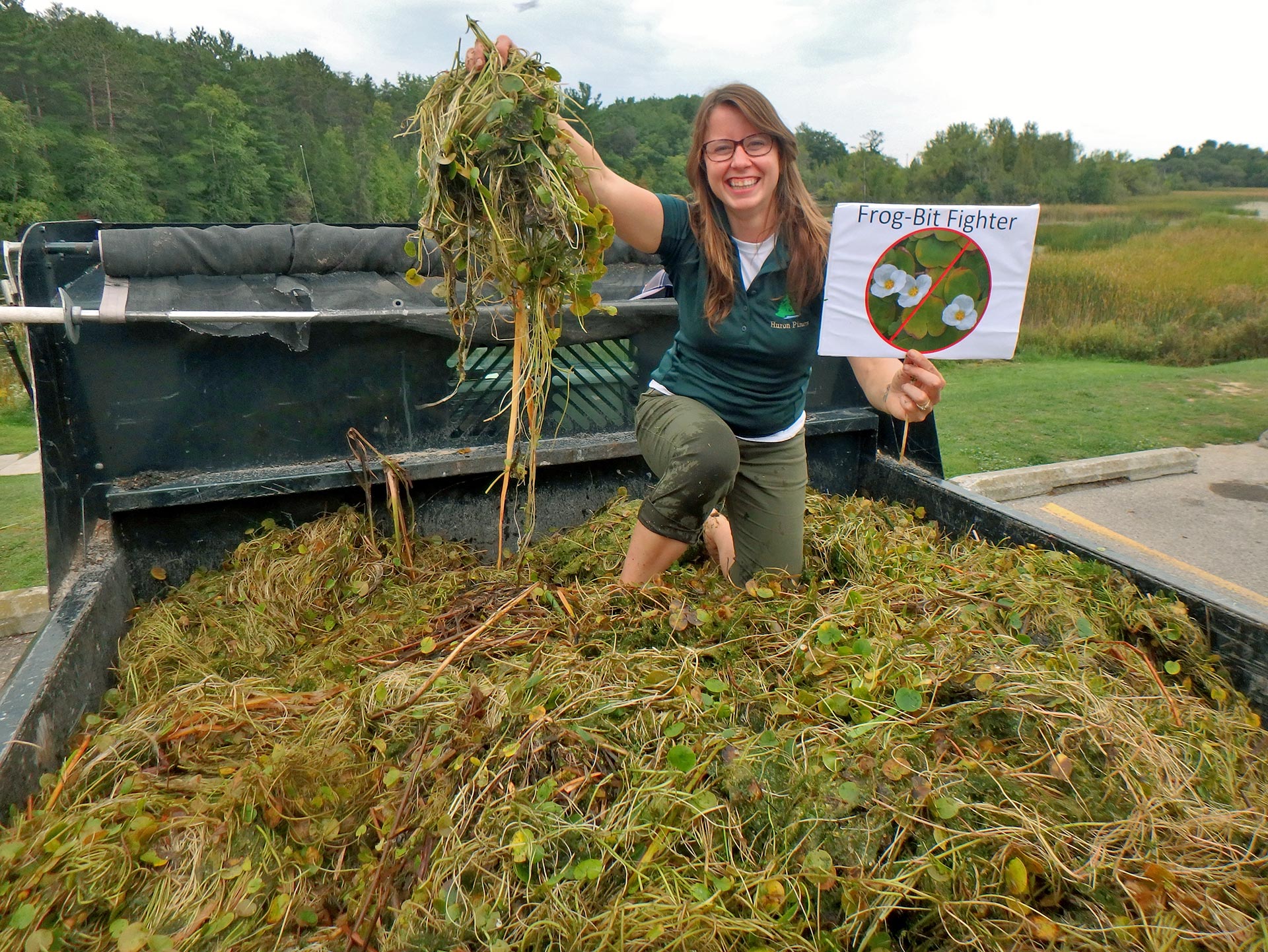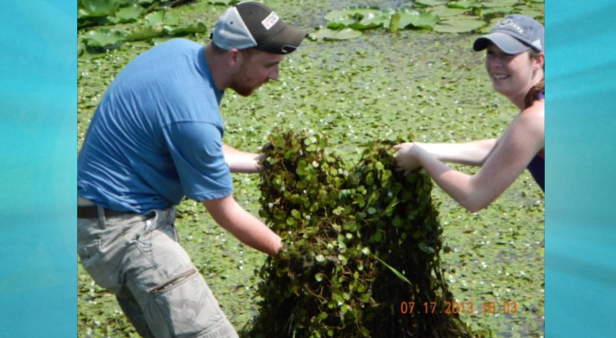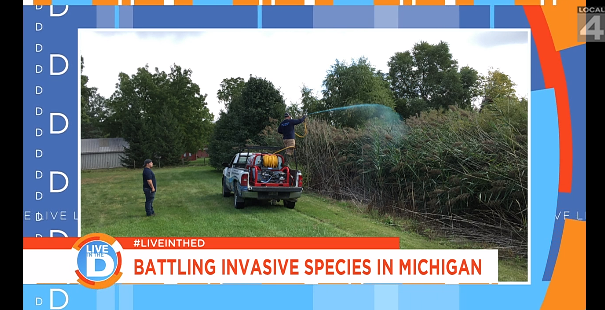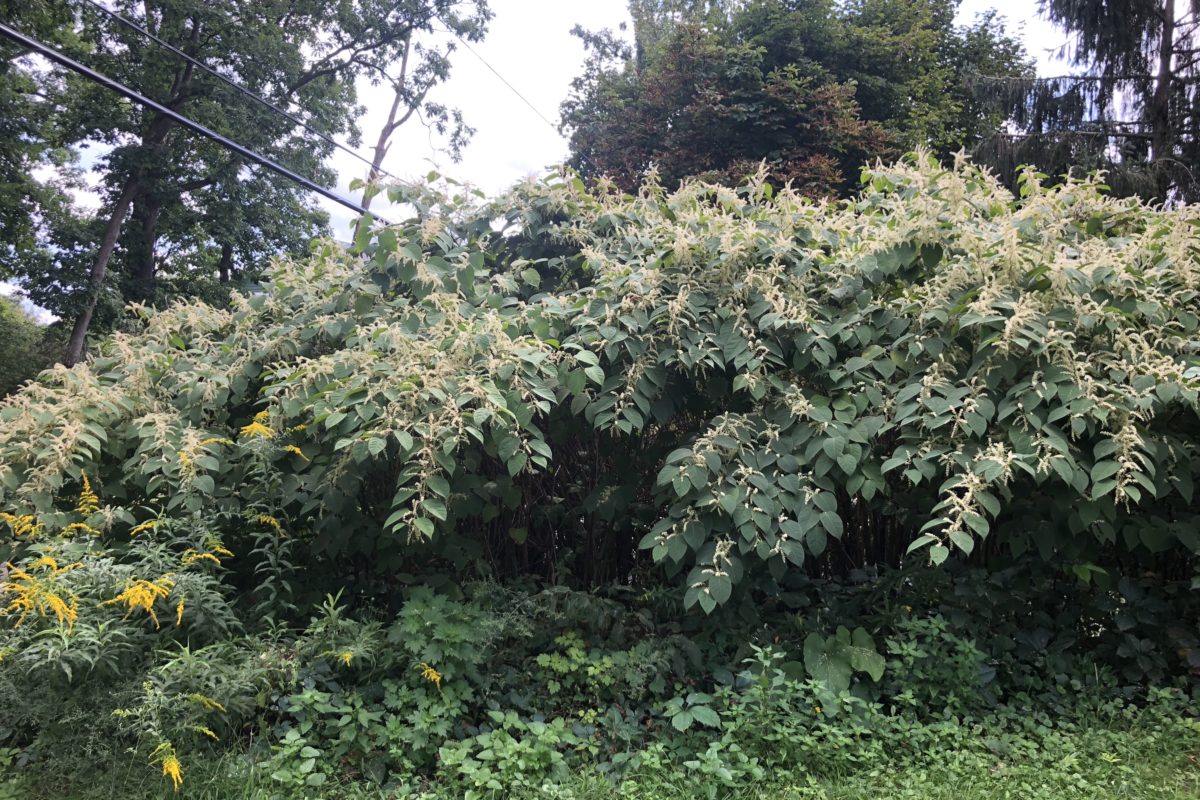Cool selfies aren’t the only reason to bring your smartphone into the woods.
Thanks to an app developed by Michigan State University’s Department of Entomology, anyone with a smartphone can now help in the battle against invasive species.
An invasive species can be any living organism – plant, insect, fish, amphibian or animal – that is not native to an ecosystem and that causes harm to the environment, human health or economy.

“In trying to drive early detection and rapid response to invasive species, we needed a tool to put in the hands of more people. These citizen scientists give us more eyes and more boots on the ground, which is a huge benefit in fighting invasive species,” said Amos Ziegler, coordinator of the Midwest Invasive Species Information Network at MSU, which developed the app.
The app allows anyone to snap photos of invasive plants or animals with their smartphone, jot down a few quick notes, and send their alert to a network of scientists and environmentalists.
Invasive species are one of the leading threats to native wildlife in Michigan and across the globe, according to the National Wildlife Federation.
Invasives have already caused significant damage to Michigan land and water resources – both public and private – and the state is continually at risk for new invasions.
Michigan takes this threat seriously.
“Fighting invasive species isn’t easy, but these efforts are very important in protecting Michigan’s outdoors,” said Matt Pedigo of the Michigan Wildlife Council.
The DNR’s invasive species watch list has 28 species identified as an immediate and significant threat, including the Asian longhorned beetle, Chinese yam, European frogbit, red swamp crayfish and several varieties of carp.
Other invasive species are designated by the state of Michigan as “prohibited” or “restricted,” and are also of concern.
Beginning in 2015, Gov. Rick Snyder and the Michigan Legislature allocated $5 million in annual funding to fight invasive species. The Michigan Invasive Species Grants Program is a joint effort of the state Department of Natural Resources (DNR), Department of Environmental Quality and Department of Agriculture and Rural Development.
In the first two years, more than $7.6 million in grant funding has gone to support invasive species education, control and management through Cooperative Invasive Species Management Areas (CISMA), as well as other targeted projects.
“Preventing invasive species from being introduced to or gaining a foothold in Michigan is of the greatest importance to protecting our world-class natural resources and outdoor recreation opportunities,” said DNR Natural Resources Deputy Bill Moritz. “We are eager to provide this vital funding to our community partners who are just as strongly committed to battling these land and water invaders.”
Invasive species know no boundaries

These locally led CISMA initiatives bring together partners including government, businesses, nonprofits and volunteers to identify and respond to priority invasive species in their areas, said Joanne Foreman, invasive species communications coordinator with the DNR.
The Oakland County CISMA brings together 28 partners to detect, prevent and control invasive plants, including phragmites, swallow-wort, Japanese knotweed and flowering rush, said Tyler Mitchell, Oakland County CISMA coordinator.
“We found everybody working in their own backyard doesn’t work. We need to cooperate across municipal boundaries to curb the tide against invasive species in a strategic manner and focus our efforts among the partners,” Mitchell said.
Phragmites (frag-MY-teez) is a major concern across much of Michigan. The dense grass can grow 15 feet high and destroy wetlands and coastal areas by choking out native plants and animals, blocking shoreline views, reducing access for swimming, fishing and hunting, and creating a fire hazard when dry.
Phragmites also grows in ditches and roadsides, spreading rapidly with roots that can exceed 60 feet long and that multiply when broken. Eradication of it is very difficult.
Thanks to education efforts, more people understand the importance of fighting invasives, said Mike Sobieski, coordinator of the Lake St. Clair CISMA, which covers Macomb and St. Clair counties.
“Waterfront property owners are very concerned about phragmites. But so are homeowners who have ditches nearby that are filled with it. Phragmites grow like crazy and slow the water flow to drains, which can easily cause water to back up on people’s property,” Sobieski said.
“It presents a menace on a lot of different levels.”
Mitchell said educational programs are making a big difference.
“We’re witnessing almost an awakening of a lot of people when these invasives come into their lives,” he said.
You don’t have to be a trained botanist
But before CISMAs, road and drain commissions, nonprofit conservancies, and state and federal agencies can fight invasives, they first must find them.
That’s where the MISIN app comes in.
“The app allows us to crowdsource data. When nonexperts are out on the weekend or on vacation and are in contact with invasive species, they can help us collect basic data in a way we could never do. Citizen scientists are an untapped resource,” Ziegler said.
MSU’s Department of Entomology launched the free app in 2013, and it’s been downloaded more than 6,500 times. Users first must register on the MISIN site and provide basic contact information; 14,000 people are already registered.
The app has a catalog of more than 300 invasive plant and animal species to assist you in logging your observations. The website includes training modules to better understand each species.
“The great thing is you don’t have to be a trained botanist to contribute data,” Ziegler said.
Using the app is straightforward: Let’s say you’re out on a trail and see what you think is garlic mustard. From the MISIN home screen, you select Plants. Choose from a list of habitats (grasses, aquatics, trees, etc.) and select Herbs. Scroll down to the garlic mustard entry, where you’ll find photos and a fact sheet about it. Click on the Report Presence button, where the app automatically notes your location and allows you to add details such as area covered and density of the infestation. You can also include comments and upload two photos.
Once you hit "send," that data is gathered at MISIN and immediately made available to scientists, botanists, biologists and naturalists across the Midwest.
“This is an invaluable tool for citizen scientists to get out there and, if you see an invasive species, take a pic and send it in. The more eyes and ears we have out there the better,” Sobieski said.
This winter, local and state officials will form their game plans for the summer months when invasives will again flourish.
“The battle is continuous and will be continuous,” Ziegler said. “Where are we on the spectrum of winning and losing? That’s kind of hard to say, and it depends on your perspective. For me, you’re battling nature, so is that one you’re going to win? Probably not, but you can pick your battles.”



